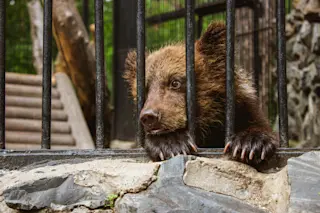When viewing an animal in captivity, plenty of people wonder whether the creature is bored, if not depressed. It might apply to a tiger pacing back and forth in an enclosure, or a snake that rarely emerges from its little wooden tunnel in a glass box.
Unlike your pet dog or cat — species that have spent tens of thousands of years adjusting to a life of domesticity — the wolves and wildcats that our pets descended from are not equipped for that lifestyle, says Liz Tyson, programs director for Born Free USA, a nonprofit wildlife conservation group that operates a large animal sanctuary in South Texas.
“If you put a wild animal in a captive situation, they are going to be compromised in one way or another,” she says. “They’re missing out on so much complexity and all the things that make them themselves.”
At a zoo, you might ...














